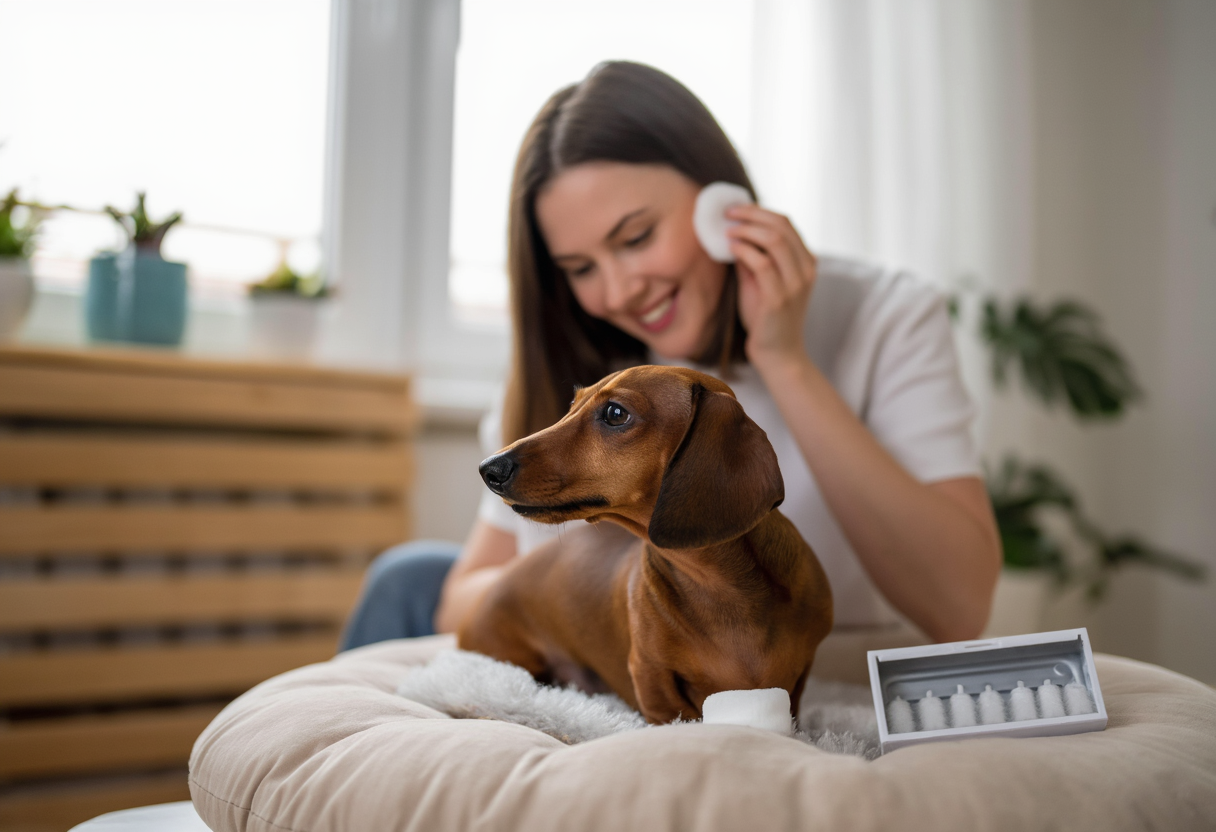6 Essential Tips for Pet Ear Cleaning Grooming You Need to Know!
Ensuring proper pet ear cleaning grooming is vital for your furry friend's health. This guide provides six indispensable tips that will help you maintain your pet's ear hygiene efficiently. From choosing the right tools to understanding ear anatomy, these insights will ensure a trouble-free grooming experience, keeping your pet comfortable and healthy.
Understanding the Importance of Pet Ear Cleaning Grooming
Pet ear cleaning grooming is a crucial aspect of pet care that often goes unnoticed. Many pet owners overlook the importance of maintaining clean ears, which can lead to serious ear infections or other health issues. Regular ear cleaning not only prevents these conditions but also helps pets feel comfortable and pain-free. Understanding the anatomy of a pet’s ear is essential; it consists of the outer ear, ear canal, and inner ear, and each part plays a significant role in your pet's overall health. By making ear cleaning a part of your routine pet grooming, you can ensure your pet remains happy and healthy. In fact, knowledge of the ear anatomy aids in determining how to proceed with effective ear cleaning procedures, making pet ear cleaning grooming an invaluable part of pet care. Remember, prevention is better than cure, especially when it comes to your beloved furry companions.
Essential Tools for Pet Ear Cleaning Grooming
When it comes to pet ear cleaning grooming, the right tools can make all the difference. First and foremost, you’ll need high-quality ear cleaning solution specifically designed for pets. Avoid using human ear solutions as they may be harmful to dogs and cats. Additionally, cotton balls or pads are excellent for gently wiping out debris without hurting your pet. Some pet owners may find ear cleaning wipes convenient for quick cleaning sessions. Remember to have some treats handy to reward your pet for their cooperation during the grooming process. As your pet gets comfortable with the tools used for ear cleaning, regular sessions become easier and more efficient. After all, a positive experience during grooming can encourage your furry friend to look forward to pet ear cleaning grooming sessions. Having a checklist of required tools ensures that you won't skip any steps, leading to thorough ear care.
How to Properly Clean Your Pet's Ears
The method of pet ear cleaning grooming can vary depending on the size and breed of your pet. Start by gently holding your pet still; some may require a helper to assist. Warm the ear cleaning solution by rubbing it between your hands before applying it into the ear canal. Massaging the base of the ear gently helps the solution to break down wax and debris. Allow your pet to shake their head—this natural reaction helps dislodge dirt. Afterwards, use a cotton ball or pad to carefully wipe out the loosened debris from the ear canal. It's vital not to use cotton swabs, as they can push dirt further in or injure your pet's eardrum. Repeat this process if necessary, and always end on a positive note by praising your pet or offering a treat. This systematic approach to pet ear cleaning grooming assures optimum results and comfort for your furry companion.
Frequency: How Often Should You Groom Your Pet's Ears?
Determining the frequency of pet ear cleaning grooming largely depends on your pet's breed, environment, and health. For pets with long or floppy ears, regular cleaning at least once a month may be necessary, as they are more prone to collecting dirt and moisture. Breeds such as retrievers or spaniels benefit from more frequent checks due to their ear structure. On the other hand, pets with smaller or upright ears may not require as frequent cleaning. A good rule of thumb is to check your pet’s ears weekly, looking for signs of buildup or irritation. If your pet swims often, consider cleaning their ears after each swim to prevent water-related infections. Thus, tailoring a grooming schedule to your pet’s specific needs is paramount in ensuring a healthy ear environment.
Recognizing Signs of Ear Problems
An essential part of pet ear cleaning grooming is the ability to recognize signs of potential ear issues before they escalate. Signs to watch out for include excessive scratching, head shaking, unusual odors, or discharge from the ear. If you notice redness or swelling, it's crucial to consult your veterinarian, as these may indicate infections or more severe conditions. Additionally, frequent ear infections can signal allergies or other underlying health problems. By being proactive during your pet’s grooming, you can catch these signs early and seek appropriate treatment. Knowledge of these symptoms is part of responsible pet ownership, ensuring a longer, healthier life for your pet. Don’t hesitate to integrate these observational skills into your routine pet ear cleaning grooming sessions, making it a comprehensive health check.
Conclusion: Maintaining Your Pet's Ear Health for Longevity
In conclusion, pet ear cleaning grooming is an essential part of your pet care routine that supports overall health and comfort. With the right tools, techniques, and knowledge about ear health, you can ensure that your furry friend enjoys a long and active life free from ear-related complications. Emphasizing the importance of integrating pet ear cleaning grooming into your monthly maintenance schedule can make a significant difference. Always remember, keeping your pet's ears clean not only prevents health issues but also strengthens the bond you share with them. So invest the time and effort in this vital aspect of grooming, and your pet will thank you with endless love and companionship.
